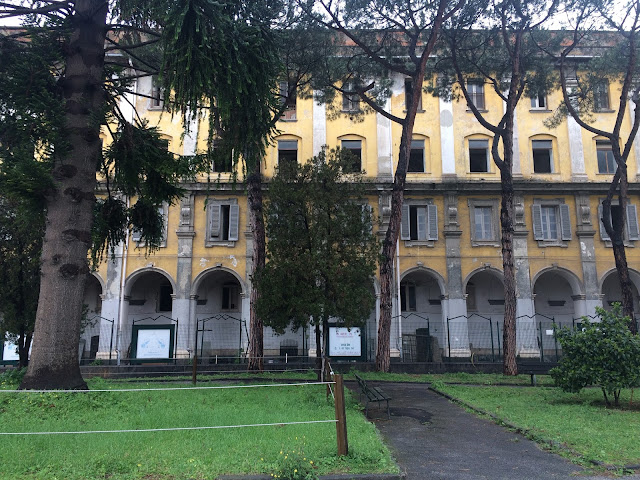 |
| Rem Koolhass 15 Elements of Architecture |
In the Central Pavilion Rem Koolhass puts forward the 15
elements of architecture for the second thematic exhibition for this year’s Biennale addressing Fundamentals, and takes a researched driven hand to interactively
immerse visitors in an "Alice Through the Looking Glass" moment; leading us on a journey through the fundamental components of our buildings.
The exhibition catalogues and
collects type, form, history and expression - branching out from a kaleidoscopic socio-historic introduction, with each element the explored in depth within their own
dedicated room, creating a space that is at once a repository, builder's yard and a laboratory.
 |
Intro - history, social and cultural influences
books, projections and media adverts of each element |
Entering into the first chamber of
the Pavilion, a gilded and frescoed gold domed ceiling is abruptly intersected
by the modern suspended ceiling, revealing in its section its secret assignment
of services - ducts and electrical conduits – all hidden within the planar and singular expression of the false ceiling panel. It serves to communicate, like other
parts of our buildings, the changes in our experience and expectations of our
buildings. Ceilings were once architectural high points – now they become
standardized and hide services.
 |
Ceiling
1909 Dome and the modern false ceiling |
Ratios of stair treads and risers are built, compared and ready for testing; balustrades in their collective stack on shelves laid out and sorted - a repository for the many parts of stair construction often over
looked in our modern haste. Their complex construction and place within our history is pasted over the walls and are archived in drawings and other manuscripts, filed within tall and aged timber drawers. An archive room where the visitor can flip through and discover.
Entering into another room in the
Pavilion, one automatically is thrown from Biennale architectural academia and onto the factory floor of window fabrication. A wall of
windows shows its historic evolution over the past 800 years and overlooks the modern fabrication process which quietly hums and rattles. Bolts and hinges are
fabricated, machinery tests out glass strength – all of this happening in
methodical automation - the lack of the human hand in its fabrication is evident, playing contrast
with the laboured artisan fabrication of windows in the past.
In the façade room - poetically labelled the dresses for our
buildings – twelve façade types are identified and tracked through its
historical and social evolution and influences. Full scale 1:1 façade modules of
each type are complete with labels pasted on the panels constituent layers – the real-life translation of penned annotation on detailed construction documentation. It’s all up close
and tangible; each façade type is revealed in section with parts all identified –
uncovering the transferable logic of construction, within a building element whose primary role is to
cover.
 |
| Into the window factory |
 |
1:1 modules of façades
history and social influences tracked alongside |
The experience continues to unravel. The "wall" rooms has collected wall panels from the Renaissance through to contemporary tensile walls and LED embedded pre-cast concrete. Toilets are placed in their historic evolution in a discreet room out the back of the Pavilion, and an exploratory sideways moving lift car forms part of the exhibit in another.
There is a depth of information - a huge body of research completed in collaboration with the Harvard Graduate School of Design. The associated 15 volume publication is available in the bookshop, and giant versions of each line the walls in the exhibition - dwarfing the visitor, belittling and raising the power of the architectural "element".
 |
Walls
Builder's yard spanning 1000 years |
 |
Stairs
Archived and constituent parts |











Comments
Post a Comment